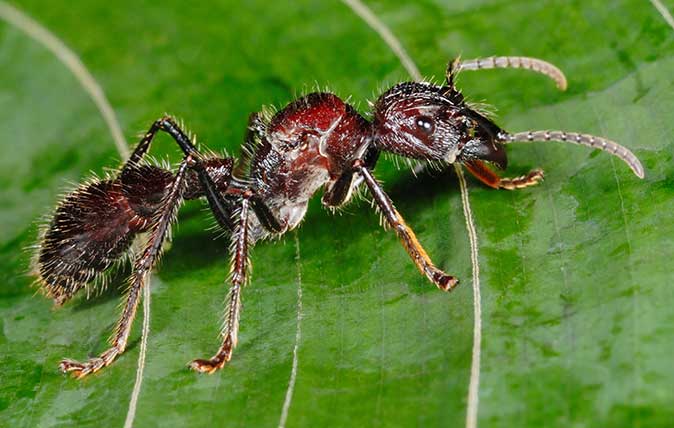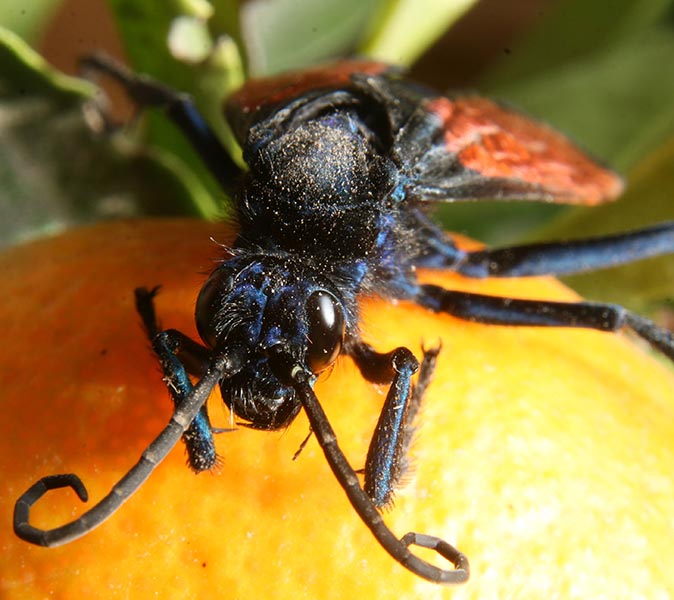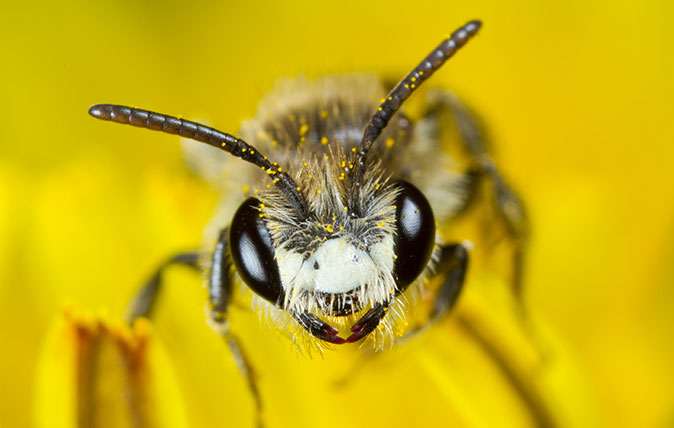Curious Questions: What is the world’s most painful insect sting – and where would it hurt the most?
Can you calibrate the intensity of different insect stings? Martin Fone, author of 'Fifty Curious Questions', investigates.


A little while ago, I was stung by a wasp. The pesky creature somehow managed to work its way through the vent in my shirtsleeve and then got itself stuck. As I might have done in similar circumstances, the wasp panicked, and in its anxiety to find a way out, it stung me.
Jolly painful it was too.
I managed to realise what was going on before it had chance to strike again and, I regret, in an uncharacteristic lapse into an un-Zen-like state, I killed it.
It was a surprise to me to learn that there is such a thing as the Schmidt sting pain index, which rates, using the honeybee as a reference point, the painfulness of a sting from one of seventy-eight carefully selected species of Hymenoptera – bees, ants, wasps, and the like to you and me.
Schmidt worked out a scale running from zero to four, nought being awarded to a creature that packs a sting that isn’t capable of breaking the skin, and a massive four, as they say on game shows, to the most painful stings known.
The bullet ant (pictured top) and the tarantula hawk scored a perfect four. Schmidt then added that the bullet ant was actually worth a '4+' score, likening its sting to "walking over flaming charcoal with a three-inch nail embedded in your heel." Forearmed is forewarned, they say.

That’s all very well and useful for consoling yourself that your temporary pain could have been so much worse if you had encountered a bullet ant in full flow, but, as Michael L Smith of Cornell University realised, that is only half the story. Surely the sensation of pain will vary depending upon where in the body you are stung.
Exquisite houses, the beauty of Nature, and how to get the most from your life, straight to your inbox.
If that is true, there can be no absolute value allocated to the sting of any one of the Hymenoptera family. So, as is the way with scientists, he decided to conduct an experiment to establish whether and how pain varies depending on sting location.
The way he chose to experiment was to take the humble honeybee – or a number of them, I would imagine – and get them to sting one of twenty five selected body parts. Research thrives on volunteers willing to help the people in white coats extend the limits of human knowledge, but for some unaccountable reason, Smith couldn’t find any and so conducted the experiments on himself.
If I remember my chemistry, you need to describe your methodology when recounting an experiment, and Smith’s was fairly simple. He held the bee against the part of the body to be tested until the sting was first felt; kept it there for five seconds; then pulled the bee away, leaving the stinger in place for one minute before removing it with tweezers. Of course, by this time the honeybee is dead.

Smith devised a scale running from one to ten to determine or describe the intensity of the pain in any given body part, and each part was stung three times. The pain rating for each location was averaged over the three rounds and ranked according to score. As Smith drily observed in his paper: ‘All the stings induced pain in the author’.
The clear message from this research is that pain really does vary according to where you are stung. The lowest-ranked places were the skull, middle toe, and upper arm, all scoring 2.3, whereas the most painful parts were the nostril (scoring 9.0), the upper lip (8.7), and the penis shaft (7.3). Armpit, cheek, palm and scrotum all scored 7.0. If you are looking to enjoy a 5.0, then you need to be stung on the foot arch, forearm, or back of the knee.
This is really handy to know, but we are reliant upon Smith’s pain threshold being roughly in line with our own. I think we need more data. Any volunteers?
Martin Fone is author of 'Fifty Curious Questions', from which this piece is an excerpt – find out more about his book or you can order a copy via Amazon.

Credit: Alamy
Curious Questions: Are bees really busy?
We've all used the phrase 'busy as a bee' – but is it justified? Or are bees just as liable

Credit: Alamy
Curious Questions: Why does freshly-mown grass smell so good?
Nothing says 'Spring is here' better than that wonderful aroma of newly-cut lawn. Martin Fone, author of 'Fifty Curious Questions',

Curious Questions: Why do the British drive on the left?
The rest of Europe drives on the right, so why do the British drive on the left? Martin Fone, author

Curious Questions: How do you make the perfect cream scone?

Credit: Alamy
Curious questions: Are you really never more than six feet away from a rat?
It's an oft-repeated truisim about rats, but is there any truth in it? Martin Fone, author of 'Fifty Curious Questions',
After graduating in Classics from Trinity College Cambridge and a 38 year career in the financial services sector in the City of London, Martin Fone started blogging and writing on a freelance basis as he slipped into retirement. He has developed a fearless passion for investigating the quirks and oddities of life and discovering the answers to questions most of us never even think to ask. A voracious reader, a keen but distinctly amateur gardener, and a gin enthusiast, Martin lives with his wife in Surrey. He has written five books, the latest of which is More Curious Questions.
